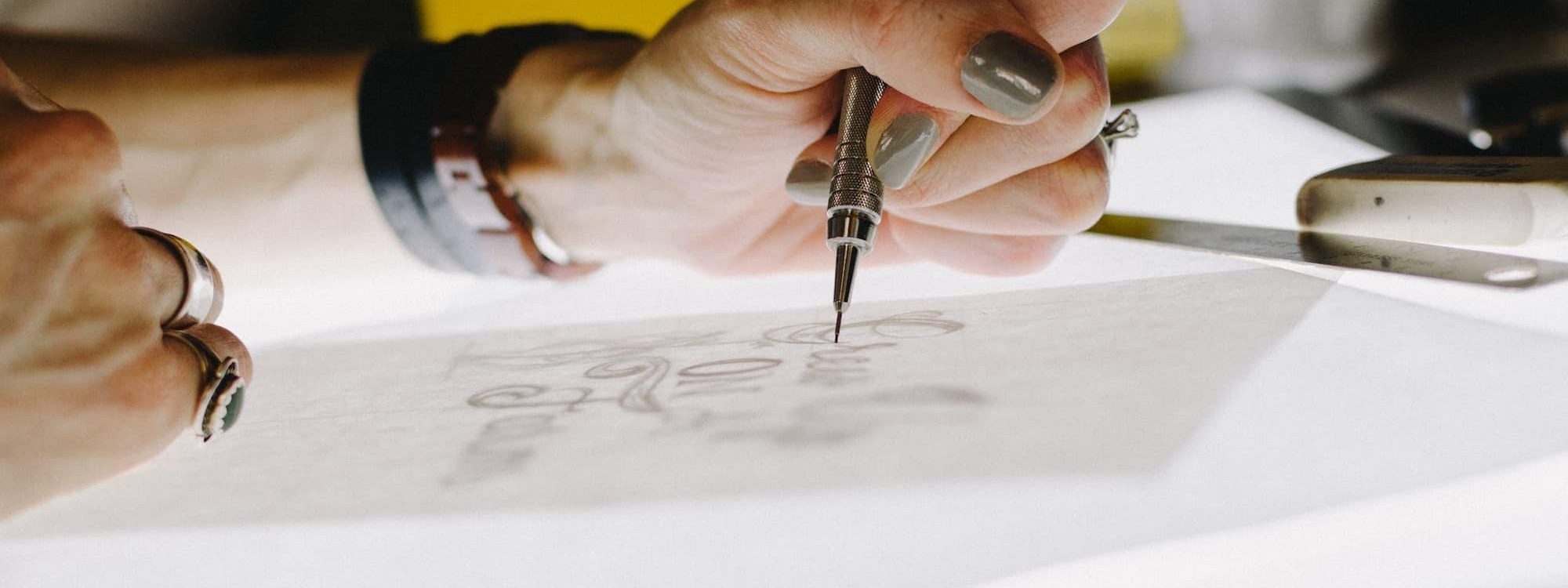7th February 2022
How to select the best font for your business logo design

How much thought do you put into typography?
Depending on your experience with graphic design, your answer could range from “none” to “tons!”
But regardless of your experience with fonts, if you want to put together an effective business logo, the typeface you choose is an important consideration.
Whether you choose to work with a logo design agency or use a business logo generator tool, the font can make or break the entire design.
For instance, if you use a wordmark, lettermark, monogram, or combination mark logo, your typeface needs to be on-point.
Factors to consider when selecting your logo font
Of course, there are thousands of available fonts out there. But not every font is created equal.
When choosing your best logo font, here are some of the main factors that need to be taken into account.
Legibility
If your viewer can’t decipher your font, then it isn’t doing its job. Don’t choose a font that is too complicated; opt for one which is easy to read, especially if your company name is more than one syllable.
Sizing
The size of your font will depend on the overall size of your logo, but make sure that it isn’t too small to read. If it is being used in a combination mark logo, it needs to be structured in a way that combines well with the other logo elements. Making it far larger or far smaller than the other elements in the logo will give the logo a disjointed feel.
Uniqueness
As mentioned, there are a lot of fonts out there — but not every font will fit your needs. At the same time, you may be tempted to opt for the first legible font you see. If you do this without researching what your competitors are using, you could end up with a look-alike font — and some might think it’s a copycat logo.
Colour
This is something of an afterthought for a font-based logo, but if you’re keeping it simple and sticking with just a wordmark, lettermark, or monogram, you’ll definitely need to make sure that your font is in a colour that plays well against your background. This doesn’t just mean to avoid clashing or blending in. Some colour combinations actually make letters more difficult to read, even if the colours themselves don’t seem to present a problem.
Try out various combinations to make sure you’re getting the colour palette that works the best for your logo and brand.
Message
Just like different types of logos present unique messages, different fonts also carry an inherent message. Since your brand message is the most important consideration, it’s vital that you choose a font that melds with and enhances your brand. For example, a serif font would be a good choice for a more traditional company, while a sans serif font would be better suited for a modern company.
Consider your brand’s personality. What is the tone of your company? Serious? Fun? Modern? Traditional? Once you have a good idea of your company’s personality, look for fonts that match that personality.
What does your font say about your business?
So what are some of the messages that fonts inherently carry?
Some messages are obvious. For example, most businesses wouldn’t choose to use a “ransom note” font for their logo, unless they were specifically playing on a unique, edgy, out-of-the-box style.
Popular fonts like Helvetica and Garamond, on the other hand, toe the line between traditional and trustworthy — and generic and overused.
Every time I see Papyrus as the chosen font for a business, I just know that candles are involved somewhere.
Some font types are just going to be better for certain types of businesses. Fatter, heavier fonts, for example, lend themselves well to logos for “traditional” or “simple” businesses, often for brands that want to establish themselves as being worthy of trust, like banks and other financial institutions.
Funky fonts and “vintage”-style fonts, however, are perfect for unique hand-made shops and craft beer logos.
To understand what message your chosen font may carry, try searching for logos that use that font or something similar. If the font is used more often in a particular market or niche, there’s probably a reason for it.
Tools and resources for typographic logo design
With graphic and web design ever more prevalent, there are tons of places to find free, open-source fonts for your consideration.
Here are just a few resources to check out:
Many of these resources keep track of what fonts are trending in different areas of the web, so they can give you a little extra insight into what your competitors might be using.
Sites like Behance and Dribbble are also great places to seek inspiration for logo design as many designers post their portfolios onto these sites.
As you scroll through your options, make sure to note your favourites so you can go back and compare them, before you decide which font rule to follow for creating your logo. It can quickly get overwhelming, especially since many fonts resemble others, with only a few slight differences.
Choosing your ideal business logo font
Typography-based logos are a great option for a good business logo design. They get to the point, they emphasize the brand, and they can be very striking and memorable.
The most important aspect to remember is your brand message. It doesn’t matter how much you love a font — if it doesn’t fit with your message or brand personality, it doesn’t belong in your logo.
And make sure that your chosen font is clearly legible, both in and of itself and in other factors, such as colour and sizing. It’s always recommended that you get some third-party feedback on readability and ease of use, to make sure that you’re not missing something.
With all the fonts available, you’ll definitely find the right one for you if you apply the tips I’ve included in this article.
Related Posts


